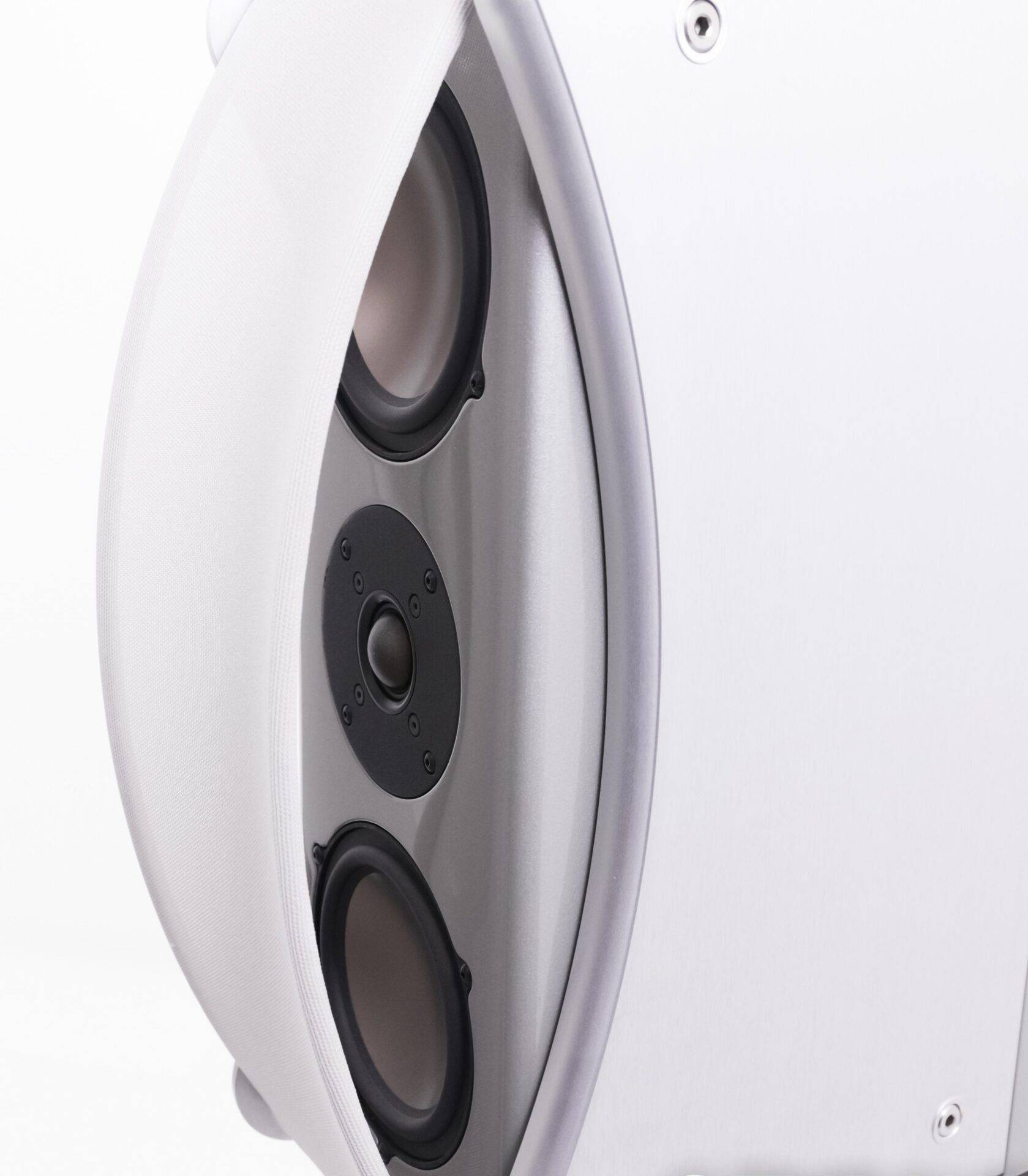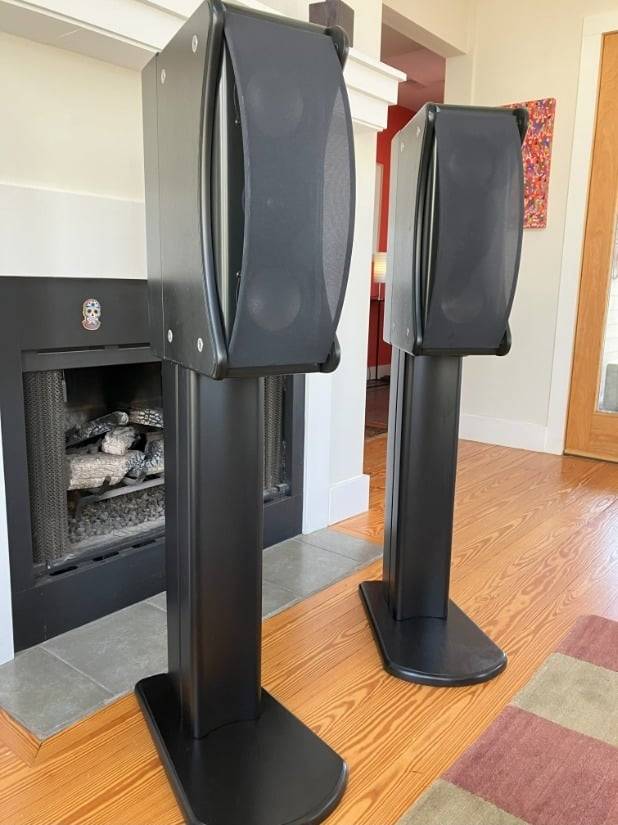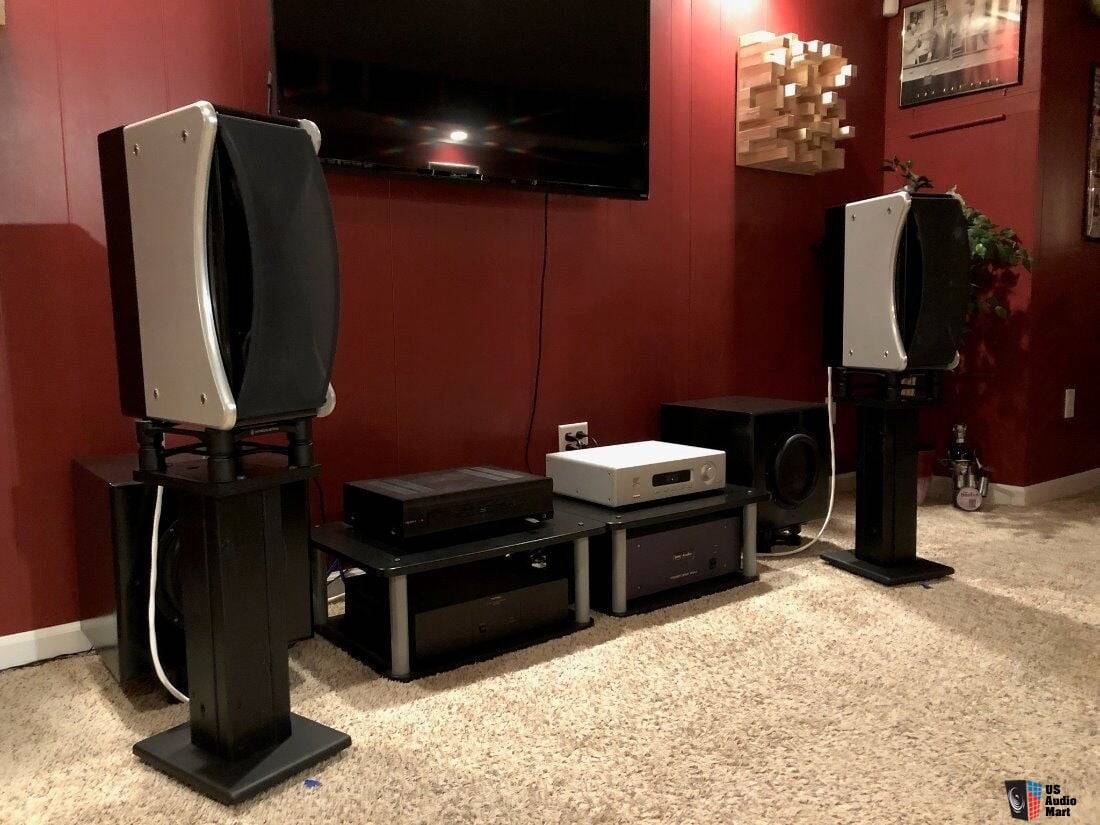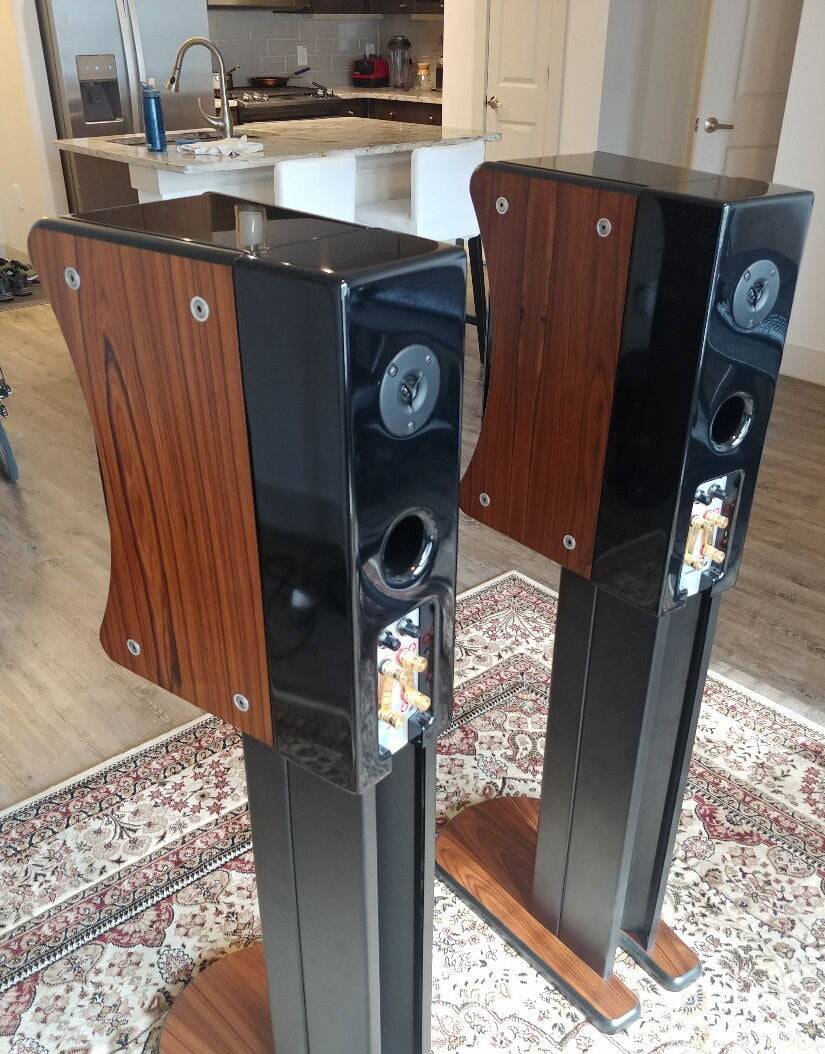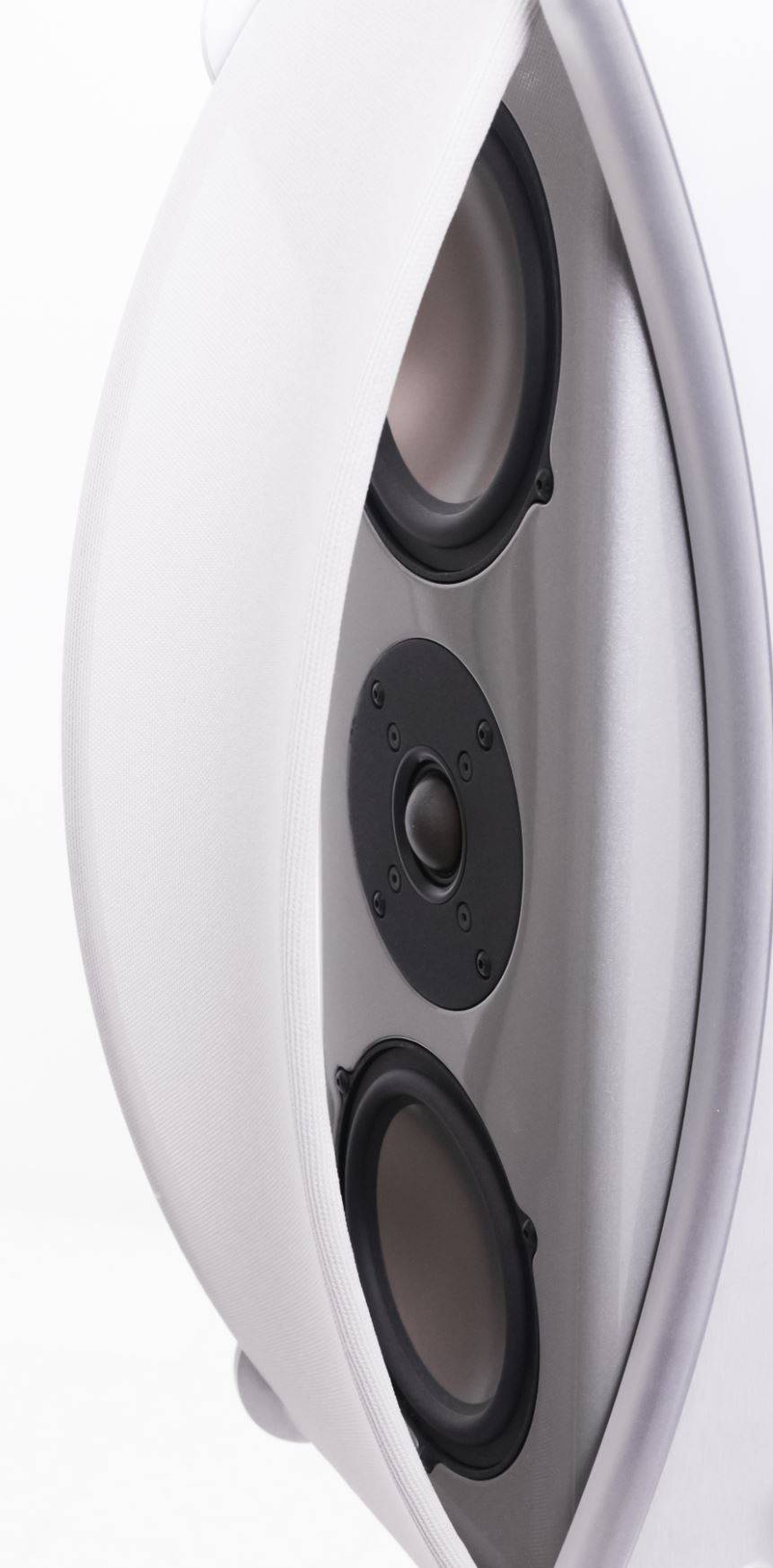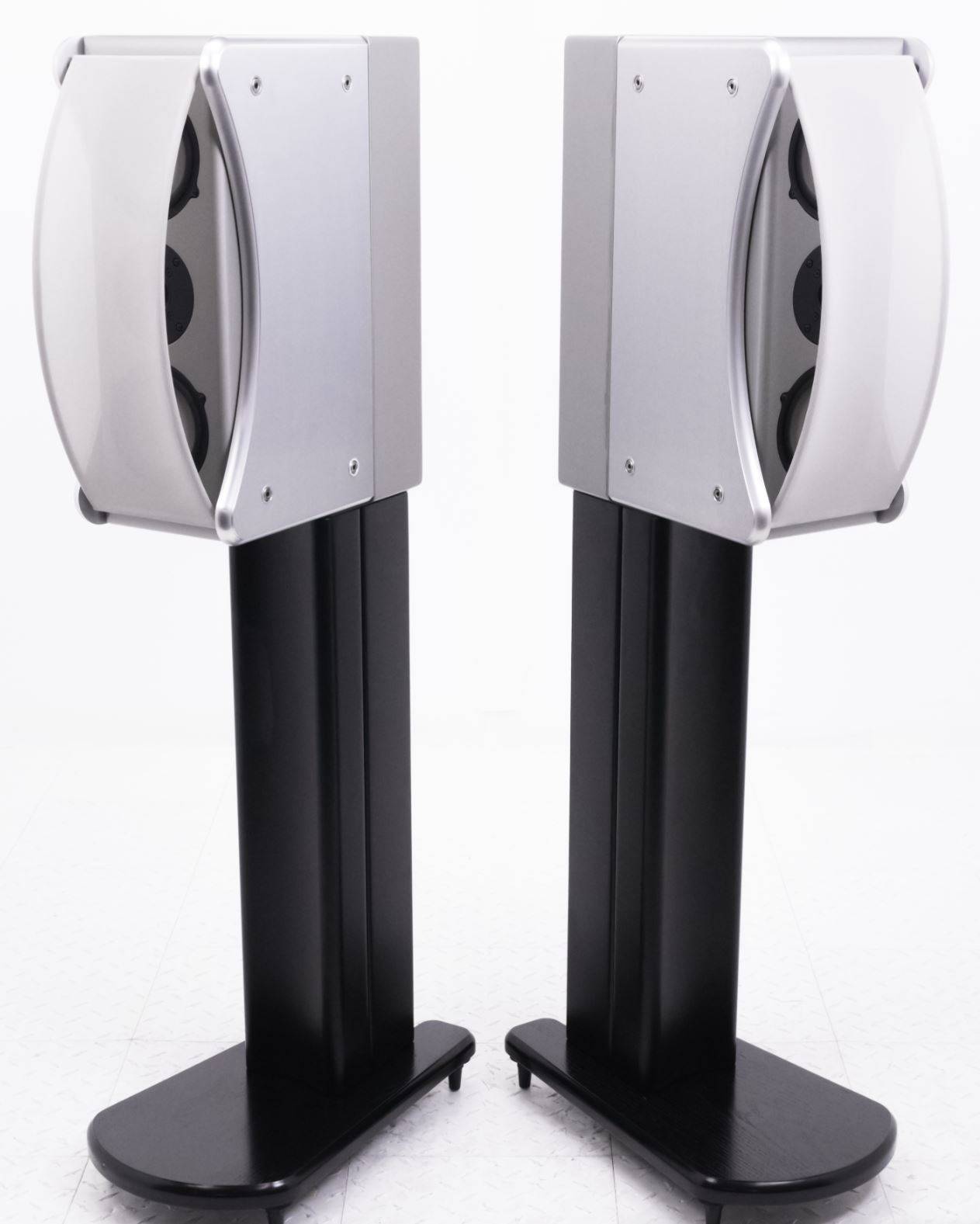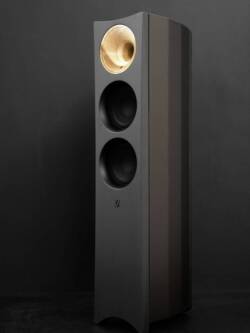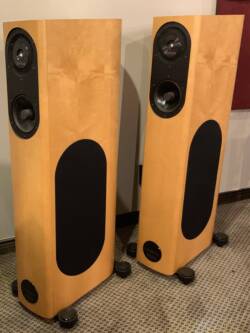Revel Ultima Gem Speakers (Stunning!!)
Original price was: R295,000.00.R58,000.00Current price is: R58,000.00.
Specifications
Revel Ultima Gem: Two-way, stand-mounted loudspeaker with rear-facing reflex port and second tweeter.
Drive-units: 1.1″ fabric-dome tweeter, 0.75″ rear tweeter, two 5″ metal-cone bass/midrange drivers.
Measured crossover frequency: 2.3kHz.
Frequency response: 70Hz-15kHz, ±1dB of target curve; -10dB at 39Hz (2-pi anechoic measurement).
Nominal impedance: 6 ohms, 4 Ω minimum.
Sensitivity: 87dB/W/m.
Power handling: not specified.
Dimensions: 19.5″ (496mm) H by 8.375″ (213mm) W by 17.375″ (442mm) D. Weight: 40 lbs (18.2 kg) each with wood side panels; 48 lbs (21.8 kg) each with aluminum side panels.
Description
A dream I have had since I discovered the pleasures of music is to possess a time machine. Not a fancy one, just a small device that would allow me to escape modern music-making and drop in to hear what must have been some of the greatest musical experiences of all time. Classical music presents no problems: Off to 18th-century Leipzig on Sunday, of course, to hear J.S. Bach play the organ in church, after an early 19th-century Saturday evening spent in Vienna listening to Beethoven improvising at the pianoforte. During the week it would still be Vienna, but forward 80 years or so to hear Brahms premiere one of his chamber works after afternoon cocktails at the Wittgensteins’, with perhaps a trip to England’s Three Choirs Festival just before the Great War to hear the first performance of Elgar’s Dream of Gerontius. And the time machine would have to have transatlantic range—I couldn’t miss Mahler conducting the New York Philharmonic around the same time. But with jazz and rock—music that is reborn every time in performance to a greater extent than in classical—there is a bewildering choice of live events from which to choose.

But of course, those musics are provided with a time machine: the recording angel that has captured so many concerts on tape and disc. That, to me, is what being an audiophile is about—being able to cocoon in your listening room after a hard day’s wage-slaving, pour yourself a glass of your favorite tipple, get comfortably ensconced in your special chair, and be transported to attend whatever concert catches your fancy, whether it be Miles Davis’ “Birth of the Cool” nonet at New York’s Royal Roost in September 1948, the Who at Leeds University in February 1970, or Van Morrison’s best performing band ever in San Francisco in December 1993.
And for that time machine to work effectively, you’d better fit it up with a good pair of speakers. Since 1994, the B&W Silver Signatures most often painted the soundstages in my listening room, with Thiel CS6es seeing service since Christmas 1997. And this summer I have been using a pair of Revel’s Gems, either on their own or augmented with Revel’s Sub-15 subwoofer powered by a Revel LE-1 crossover/amplifier.
The Ultima Gem
When Revel’s chief engineer, Kevin Voecks, was at Snell Acoustics, he produced a series of fine speaker designs that, while each was designed to a price, handily outperformed most of the competition. When he was asked to join startup company Revel, it appears that he was given carte blanche for the company’s first design, even down to designing and manufacturing dedicated drivers for the Gem with the resources of Revel’s parent company, Harman International.
The Gem is a graceful, narrow-aspect-ratio stand-mounted design, with twin mid/woofers vertically flanking a central 28mm tweeter (a high-performance soft-dome design from Danish manufacturer ScanSpeak). The 5.25″ low-frequency drive-units are from Revel and use a one-piece titanium concave dome with a fluoroelastomer rubber surround, neodymium magnets, and a 2″ edge-wound voice-coil with a Faraday ring to reduce magnetic distortion. The woofers are reflex-loaded with a 2″-diameter flared port some 6″ deep; this vents on the rear panel. As with most of Kevin’s Snell designs, a second tweeter on the rear of the cabinet equalizes the speaker’s power response above 8kHz to compensate for the front tweeter’s increased directivity above that frequency. All drive-units are magnetically shielded to optimize the design for home-theater use.
The crossover uses high-quality components, such as polypropylene-dielectric capacitors, and is hardwired using Kimber cable. It operates just above 2kHz, and the woofer and tweeter sections are physically separate, communicating with the outside world via separate sets of binding posts. Switches are provided for independent adjustment of the levels of the two tweeters.
The enclosure is constructed from MDF and is available in matte- or gloss-black finishes. Wooden or aluminum cheeks bolt on to the sides, with slight extensions at top and bottom to hold the vestigial grille frame. Laser interferometry was used extensively in designing both cabinet and woofers in order to minimize resonant modes and, in the case of the latter, ensure true pistonic behavior to at least an octave above the crossover frequency. The 28.5″ stands match the Gem visually and come with the central pillar ready-filled with sand.
Kevin Voecks and his colleagues at Harman have been pioneers in developing both truly objective listening tests and measurement techniques that correlate well with what is heard. Such tests played an important role in the Gem’s design. There is not the room to describe them in this review, but I encourage readers to visit the Revel web site and check these tests out for themselves.
The Ultima Sub-15/LE-1
The sealed-box Ultima Sub-15 visually matches the Gem, though the side cheeks are now top and bottom cheeks. A monstrous 15″ driver with a stiff kapok- and Kevlar-impregnated pulp cone, a huge nitrile rubber surround, and a cast aluminum alloy frame provide the grunt. This drive-unit features a 4″ edge-wound voice-coil that weighs almost six ounces and is said to be capable of 1.5″ of peak-peak excursion!
The Sub-15 is intended to be used with Revel’s Ultima LE-1 monophonic power amplifier, which incorporates the optimum crossover and response-shaping circuitry. Specified power is 725W into one Sub-15 or 1200W into two. A remote control is provided so that the user can adjust the blend between the satellites and subwoofer from the listening position—a red LED display on the front panel provides visual feedback. This amplifier can be used to drive one or two Sub-15s, and has both balanced and unbalanced inputs and outputs.
Gem sound
Setup proved rather time-consuming in that the Gem was very sensitive to small changes in position in my room, particularly regarding a thickness in the transition region between the upper bass and the lower midrange. I realized that, with its tall stands, the positions that had worked well for the Silver Signatures were resulting in two of the woofer-to-boundary distances for the Gems being almost the same. (The woofer-to-sidewall, woofer-to-floor, and woofer-to-front-wall distances should be as different as possible.) Eventually, I ended up with the drive-units about 49″ from the wall behind them and 70″ from the sidewalls. The subwoofer was placed close to one corner, in front of the ASC Tube Traps that live there, but was left turned off for all the preliminary auditioning, which involved the Gems on their own.
Playing a wide variety of program material, I settled on the rear tweeters being on and set to “0” and the front tweeter set to “-0.5dB.” Without the rear tweeter, which basically covers the top audio octave only, the balance in my quite well-damped room lacked a little air. Setting the front-tweeter level proved interesting in that even the 0.5dB level steps on its control seemed too large at times. But when I thought about it, a level shift of 0.5dB covering the entire operating range of the tweeter represents a large “area under the curve”—ie, a lot in energy terms—so it should be quite audible.
No matter how I set the controls, there was always a slight mid-treble accentuation audible. Nothing to get bothered by, but it should be mentioned, and in this the Revel was not dissimilar to the B&W Silver Signature. Whereas the British speaker has a rather polite, laid-back balance with a voluptuous midbass, the Revel Gem sounds more neutral, both in its treble voicing and in the character of its bass. As Tom Norton noted in the July/August ’98 issue of Stereophile Guide to Home Theater, the Gem is voiced a little lean overall rather than rich, which does make it a little more fussy regarding the other components used in the system. But when it was used with top-caliber source components, the results were nothing less than magic.
Such subtleties in soundstaging as the slightly differing distances from the listener of the lead and backing voices on bassist Rob Wasserman’s 1994 collaboration with Brian and Carnie Wilson, “Fantasy is Reality,” on Trios (GRP/MCA MGD-4021), due to the slightly different amounts of artificial reverberation applied to each voice in the mix, were laid bare, but without the treble glare that often accompanies such clarity. And the image specificity was among the best I have auditioned in my room. The Gems painted a broad, stable stage between and behind them, without sound sources being pulled to the sides at some frequencies—always a sign of coloration. In fact, it was hard to write about the Gem having a character; other than the particular balance characteristics I described above, it was about as coloration-free as I have experienced. Well-recorded classical piano had a believability to its presentation that is rare.
This must be partly due to the Gem’s excellent dynamics, its absence of compression. Compression is almost universally used in recordings to bring up the average loudness while leaving the peak levels untouched. It is, I believe, a major reason for recorded sound being fundamentally different from live sound. Yet, like sugar, that other ubiquitous drug, it is hard for engineers and audiophiles alike to kick the compression habit. My reference B&Ws, it must be admitted, do compress dynamics—not so much as you’d notice any unmusical effects, but after I’d gotten the Gems settled in, I found that I was playing my music somewhat louder. And there was a freedom from the sound clogging up that was remarkably addictive.
Allied to that was a freedom from grain. My live Gerontius recording on Stereophile Test CD 2 (STPH004-2) features an enormous double choir, a large orchestra, and three solo singers. Not surprisingly, its dynamic range is wide, but when you set the level so the quiet passages are about right, many speakers start to clog up and get grainy when all hell and heaven break loose. Not so the Gems, which just got appropriately louder, but at the same time allowed me still to hear the small details from which the climax is/was constructed.
I was impressed by the Gem’s bass, but it was time to bring in the pros from Dover, in the form of Revel’s Sub-15 and LE-1 combination.
Adding the subwoofer
“If you can hear a subwoofer working, it’s set too loud,” goes the old maxim. The paradox is that when a sub is set up truly optimally, it does almost nothing almost all of the time with a music signal. This makes it hard to justify the purchase to someone else, and is probably why almost all systems incorporating a subwoofer that I have experienced suffer from an amusical boom.
After I had the Revel Sub-15 and LE-1 amplifier properly dialed-in, I turned off the main amps for most of a CD and, apart from the occasional grumbling and slight pedal note, there was nothing to be heard. Yet listen to the Gem satellites without the Sub-15, and that slight grumbling turns out to be truly important to the presentation both of the soundstage and the musical experience.
The downside of a full-range system, however, is that many recordings include all manner of low-frequency noises. The 1987 Alban Berg Quartet/Amadeus Ensemble live recording of the Brahms second string sextet (EMI CDC 7 49747 2), for example, which I play often, was revealed as having an intolerable Paris subway accompaniment. What I did find interesting about this encounter was that with this kind of music, without any upper-bass sounds in the satellites to provide an image anchor, the LF rumblings could be clearly located at the subwoofer position despite the conventional wisdom that bass sounds are nondirectional. (With rock and orchestral classical, the LF sounds were located at the correct positions within the soundstage, even though they were still actually coming from the subwoofer.) I would imagine that, absent masking, the corner placement’s maximum excitation of room modes gives the ears the best locational clues as to where bass sounds are coming from.
But one area in which I was continually impressed by the Sub-15/LE-1 combination was how well bass notes were defined. This subwoofer really does start and stop quickly. Yes, I am aware that a low-pass-fed woofer’s impulse response is dominated by its bandpass ringing, but it has to be admitted that some woofers ring longer than others.
One area of weakness for all subwoofers is the quality of the feed to the main, high-pass-filtered speakers. It’s nice to have the bass extension, but not if this is at the expense of added midrange grain or a reduction in the soundstage. The LE-1 added a very faint treble haziness to the system’s presentation that was noticeable on direct comparison but was not significant when I was assessing the system on its own sonic merits.
As I was writing up the measurements for this review, I was listening to the Adagietto from the 1991 Welsh Symphony Orchestra’s live recording of Mahler’s Symphony 5 with Tadaaki Otaka (BBC Music Vol.I No.9). The harp and pizzicato bass notes that punctuate the very Viennese, sadness-and-sweetness-ridden string writing illuminate the acoustic like small stones tossed into a still pool (as do the various audience noises). And as the harmonies slowly move toward the cathartic tonal resolution at the end of the piece, the pedal notes on the double basses, reproduced without boom by the Gem/Sub-15 combination, pin down the work’s tonal center. This was bass clarity I rarely hear from full-range speakers.
Finally, the review written, I rewarded myself by putting on Van Morrison’s A Night in San Francisco (Polydor 521 290-2), disc 2, cuts 3 and 4, where Van and his band, with Georgie Fame on Hammond organ and Jimmie Witherspoon guesting on vocals, blast through “I’ll Take Care of You,” “It’s a Man’s Man’s, Man’s World,” “Lonely Avenue,” and “4 O’Clock in the Morning,” exploring the triple-time blues in body-swaying detail. I am here to tell you that with the full Revel system powered by the Levinson monos and the Wadia digital front end, I was there. Van was the man! Live sound in the home just doesn’t get any better.
Conclusion
No doubt about it, this is not a loudspeaker system for the financially faint of heart. The Revel system as reviewed, with gloss-black carcass and rosewood sidepanels, costs $18,500, with $9800 of that sum being for the subwoofer and amplifier. And don’t think you can skimp by not buying the stands—these are essential to getting the best from the Gems. At $7500-$10,200/pair (including stands), Revel’s Gem is a shoe-in recommendation for someone with not too large a room, who wants a high-dynamic-range speaker with state-of-the-art transparency and is prepared to pay for it. Add the Sub-15 and an LE-1 and you have a superbly engineered, true Class A speaker system that will raise goosebumps with all kinds of music. It’s my new reference.
